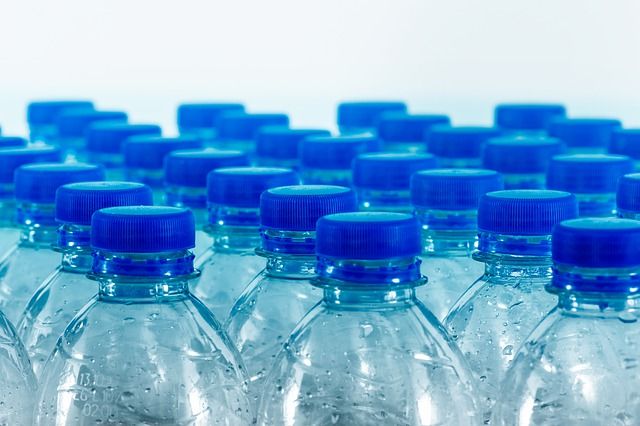Garbage and solid waste recycling in Mexico. Who wins?
Companies insist that recycling is the best thing they can do to eliminate plastic pollution. Why do they want to convince us of this? One answer is money.

Getting rid of the garbage in cities is such a big problem that management systems have been created to handle it properly. In Mexico, the Ministry of the Environment and Natural Resources (Semarnat) is the entity in charge of designing waste management policies, and in order to carry them out, the intervention of the states and municipalities is necessary.
Integrated waste management is the articulated and interrelated set of actions for waste management, from its generation to its final disposal, in order to achieve environmental benefits, the economic optimization of its management, and its social acceptance, responding to the needs and circumstances of each locality or region.
The type and amount of waste we produce are directly related to our ways of producing and consuming. The indiscriminate use of packaging, containers, and wrappings contributes enormously to the generation of waste. Everything that is no longer useful to us is considered garbage and we try to get rid of it, without worrying about what happens after we hand it over to the cleaning service or place it in a container.
Nowadays, in cities, most of what is thrown away comes from homes, and its main component is no longer - as before - food leftovers, but the remains and packaging of manufactured products, such as glass, paper, cardboard, and plastics. Municipal solid waste (MSW) is made up of organic waste - vegetable and animal matter, paper, cardboard, and wood - and inorganic waste - glass, metals, and plastics. There are multiple environmental impacts caused by waste; among the main ones are the following:
Soil and water contamination caused by direct dumping of waste or leachate seepage.
Air pollution from the biogas produced when organic waste decomposes, with gases such as carbon dioxide and methane that contribute to the greenhouse effect. This is a risk factor because it can be very toxic and explosive under certain conditions.
Soil erosion.
Unpleasant odors.
Obstruction of drains and sewers.
Deterioration of the urban image or natural landscape.
The proliferation of harmful fauna, constituted by all those animals that can represent some risk for the health.
The 3 R's: reduce, reuse and recycle
Reduce
It is said that the best waste is the waste that is not produced. This first "r" focuses on the reduction of consumption and energy to reduce the effects on the environment. One of the axes that have been considered to reduce the generation of waste is to make a responsible consumption that considers:
Buy fresh, unprocessed foods and avoid those with excessive packaging.
Before buying any product, consider whether it is really needed or whether it is just a response to a desire stimulated by advertising.
Find out with what raw materials it is made, how its manufacturing process impacts the environment, and if it generates any damage or social injustice.
Consider what impact on the environment and the social environment has the use of what you are thinking of buying.
Every time you buy something, you should consider the impact that the waste and garbage it generates will have.
Avoid "throwaway" products, if they are not strictly necessary.
When shopping, take cloth bags, paper bags, cardboard bags, or even previously used plastic bags until they are no longer useful.
Avoid cans and products with a lot of packaging.
Give priority to products with returnable or reusable packaging.
If disposable items are used, make sure they are made of biodegradable or, in any case, recyclable materials. For example, plates, cups, cutlery, bags, pens made of materials that can be used for composting, such as bioplastic instead of plastic.
Reuse
The second "r" consists of finding a new use for the things we are thinking of throwing away, so this measure also reduces the production of garbage. Examples include using bags or packaging more than once, refilling bottles, using the back of printed sheets on one side only, or adapting products and packaging to serve another function.
Recycle
The third "r" corresponds to recycling, that is, subjecting a discarded product to a process that transforms it into a raw material or a new product, as can be done with plastic, glass, paper, textiles, or cardboard. The use of agricultural and livestock waste as fuel or fertilizer, and even as feed for farm animals, are also common and sensible recycling practices for waste recovery.
The condition for starting a recycling process is to separate the waste. This separation can be done from our homes and workplaces. There are different degrees of separation. The simplest, but most useful, is to distinguish between organic and inorganic waste.
One reason for recycling is the high cost to governments of waste management and handling (in Latin America alone, more than 600,000 tons of metals are thrown away every year). But there are other reasons related to saving natural resources and energy. For example, if we recycle materials such as glass, we save up to 85% of energy, and for every ton of glass that is recycled, we save 1.2 tons of raw materials. The recovery of two tons of plastic saves one ton of petroleum and the recycling of one ton of paper avoids the death of 17 trees.
Who wins with the recycling business?
The use of plastics has grown steadily due to the advantages they represent in terms of cost and variety of applications. Every year, 500 tons of different types of plastics are produced in the country. Among the objects of greatest daily consumption are containers and, among these, PET (polyethylene terephthalate) and unicel (expanded polystyrene).
The latter material is widely used for packaging fast food and electronic items and is also used in the manufacture of disposable cups and plates and in the construction industry. When microwaved to heat soup, coffee, chocolate, etc., it forms microalloys that can produce substances that are highly poisonous to humans (carcinogens) and pollutants, such as dioxins, that damage the immune system and alter the hormonal system. Technically, unicell can be recycled, but its recovery rate is very low and for this reason, it is not treated industrially.
Companies in the recycling business know the important role they play in the plastic epidemic and the responsibility they must assume in this regard: stop producing plastics and develop technology to generate less polluting materials. Corporations make millions for the waste they recycle. In 2018, the World Economic Forum and the Ellen MacArthur Foundation affirmed in the report "The new economy of plastics" that companies could recover between 80 billion and 120 billion dollars by recycling, instead of discarding, the plastics they produce.




